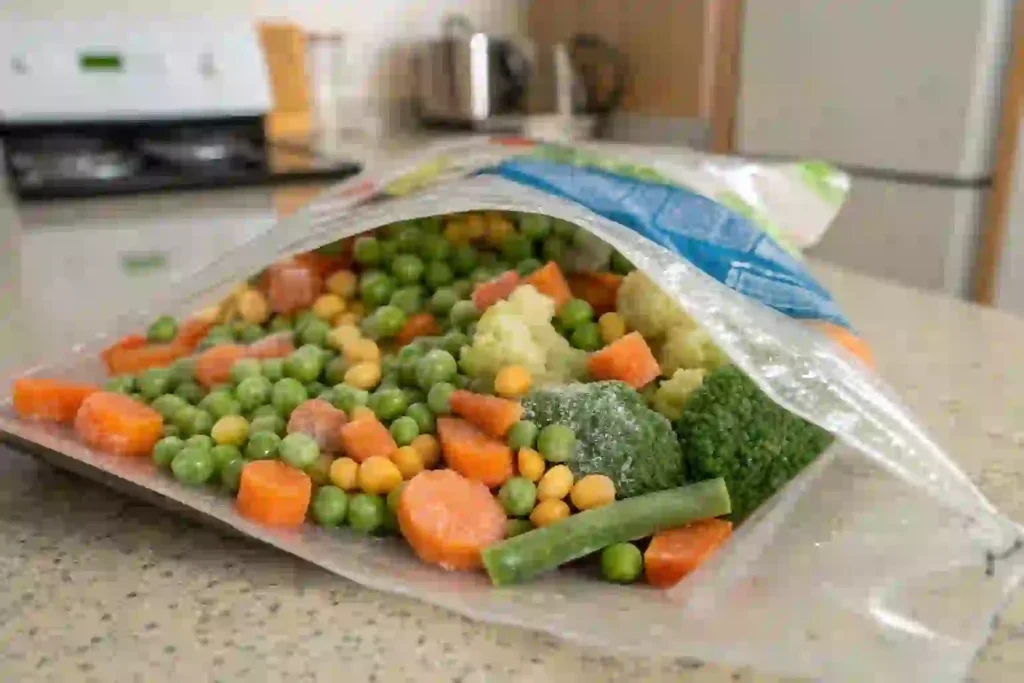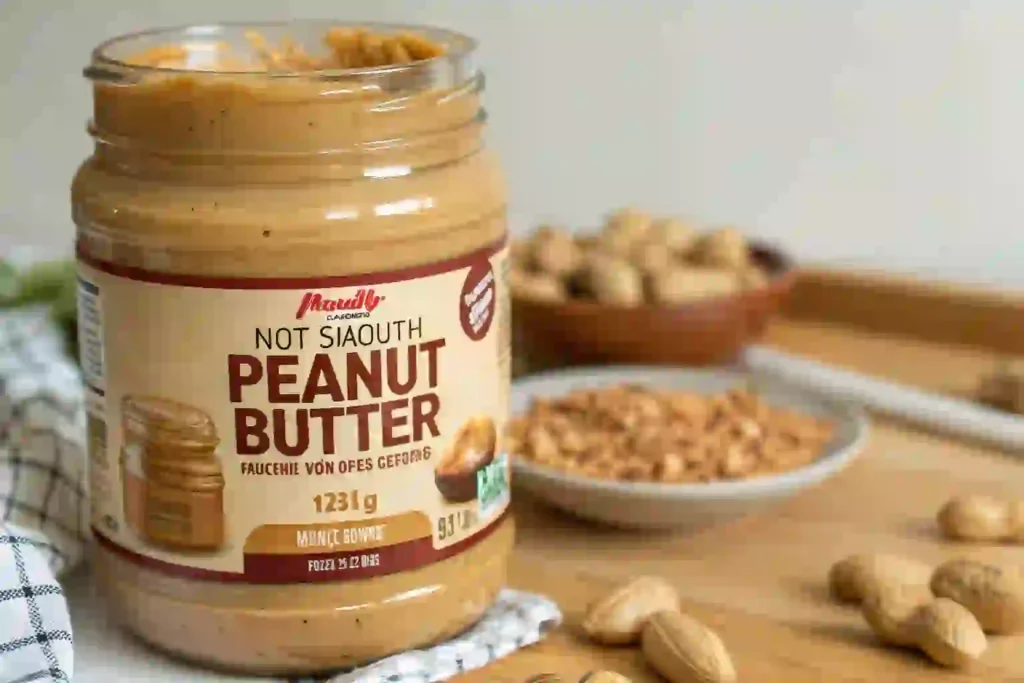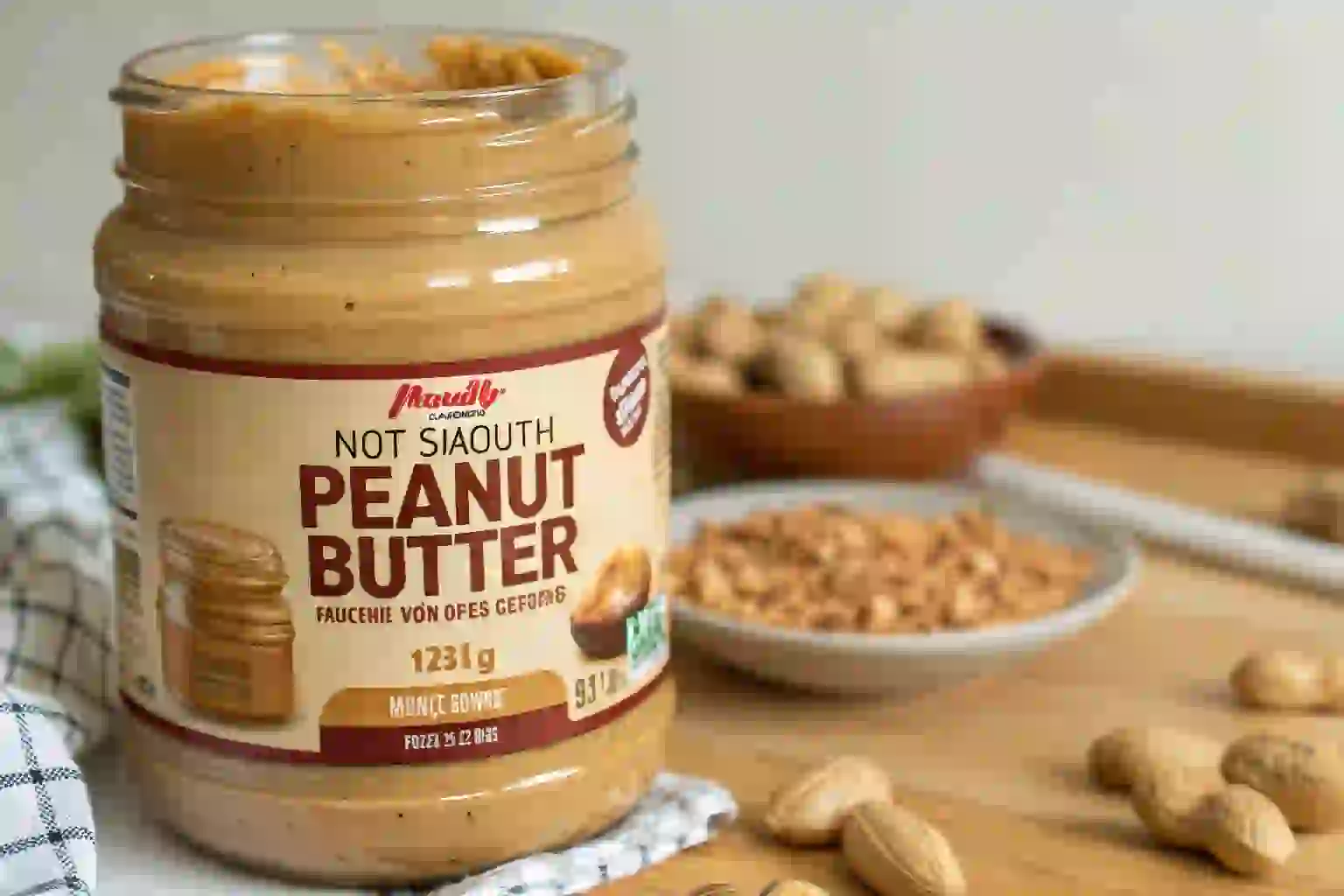Protein is pricey—at least, that’s what most people think. The fitness aisle wants you to believe that gains come in $50 tubs or overpriced bars. But let’s be real: you don’t need to drop half your paycheck just to hit your macros.
The truth? Grocery store shelves are hiding plenty of budget-friendly protein sources—you just have to know where to look. No fancy branding. No mystery powders. Just real food that fills you up, keeps you going, and won’t blow your budget.
This guide lays out 15 affordable, high-protein staples you can find at almost any store. Some are obvious, some are underrated, but all of them get the job done for less. Whether you’re meal prepping on a shoestring or just tired of spending too much on food, this list is built to keep both your stomach and your wallet full.
Let’s break down what actually works—without the hype.
Best Budget-Friendly Protein Foods
You ever stand in a grocery aisle, staring at overpriced protein bars, thinking, There has to be a better way? There is. And no—it’s not hidden behind some influencer’s discount code. It’s right in front of you, in the regular aisles, probably with a generic label.
This isn’t about “perfect” food. It’s about stuff that fills you, fuels you, and doesn’t insult your wallet. Some of it might not be pretty. Some you’ll love. Some you’ll grow into. That’s real life.
Eggs
Let’s be honest—eggs are boring… until you run out. Then suddenly, they’re priceless. Scramble them, boil them, overdo them on toast. Six grams of protein per egg, and they never judge you for skipping dinner prep.
Canned Tuna
It smells like commitment, but hear me out. One can = 20g of protein. That’s a full meal if you mix it with mustard, a pickle, and bread. Or not. Just eat it with a fork and move on. Desperation meals count too.
Dry Lentils
You won’t crave them. No one daydreams about lentils. But when you’ve got five bucks and a week to feed yourself? Suddenly, they’re royalty. No fridge. No stress. Just simmer, season, and pretend it’s fancy.
Peanut Butter (unsweetened)
Spoon in oats. Spoon in mouth. Either way, you’re getting fat, fiber, and 8g of protein per scoop. Skip the sugar-loaded stuff—those jars are lying to you.
Big Tub Greek Yogurt
Tiny flavored cups are cute… and useless. The plain, no-nonsense tub is where the real protein lives. Add honey, garlic, or both (yes, both—try it), and it works with everything from breakfast to dinner dips.
Bone-In Chicken Thighs
If you’re still overpaying for breasts, we need to talk. Thighs are cheaper, juicier, and taste like you actually tried. Roast them once, eat three different meals. Or four, if you’re creative or just tired.
Frozen Edamame
Microwave. Salt. Done. 17g of protein and you didn’t even touch a knife. Bonus: it looks like effort when you serve it, even though it took zero.
Canned Beans
You know the drill—black, pinto, kidney. Doesn’t matter. They’re protein with a pull-tab. Throw them in rice, soup, tortillas, or mash ’em. Cheap, forgiving, and weirdly comforting.
Cottage Cheese
Some people gag. Others swear by it. I used to hate it—until I tried it with hot sauce. Now? I keep a tub in the fridge like it’s milk. 25g of protein per cup. Don’t knock it till…
Oats
They’re the quiet background character in your diet—until you realize one bowl can actually carry your morning. Add peanut butter, a splash of milk, maybe cinnamon. Suddenly, it’s a meal, not mush.
Rice + Beans Combo
This is budget food gospel. Together, they form a complete protein. Alone, they’re just okay. But toss in cumin, garlic, or whatever’s left in the fridge? It slaps. And it costs almost nothing.
Canned Sardines
This is where it gets weird. But if you can handle the smell (or grew up with them like I did), sardines are a powerhouse. Protein. Healthy fats. $1 a can. Just maybe don’t open them at work.
Tofu
You either love it or you don’t know how to cook it yet. But once you do? Game-changer. Press, cube, fry. Season like your life depends on it. One block = 35g protein and unlimited flavor potential.
Sunflower Seeds
Surprise entry. One handful gives you 6g protein, and they’re usually cheaper than almonds or any “fancy” nuts. Snackable, tossable, and somehow always underappreciated.
Milk (Store Brand)
Plain old milk. One cup = 8g protein. Stir it into oats, make pancakes, or just chug it after dinner like you’re seven years old again. No shame. Just protein.
What’s the Cheapest Protein Per Gram?
- Dry lentils are ridiculously cheap and stretch across meals.
- Eggs are still unbeatable day-to-day.
- Canned tuna wins when fridge space runs out and hunger kicks in.
If you’re broke and hungry, these three are your new best friends.




Best Grocery Stores for Cheap Protein
You can have the same list, same budget, same hunger—and still end up paying double, depending on where you shop. It’s not just about being “smart with money.” It’s about knowing which stores quietly hand you wins… and which ones sell you vibes instead of value.
I’ve tried them all—sometimes out of curiosity, sometimes out of desperation. Here’s what actually makes a difference when protein’s the priority but your wallet says chill.
Discount Chains (Aldi, Lidl, etc.)
Let’s be honest—these stores feel bare-bones. No music. No deli guy flirting with customers. No “locally foraged” granola bars. Just… shelves and cheap basics. And that’s the magic.
You’ll find eggs, canned beans, dry lentils, tuna, Greek yogurt—staples without the markup. Aldi, in particular, nails that “no-frills, all-function” vibe.
Small win moment: I once walked out with a week’s worth of food for under $25. It felt like cheating.
Warehouse Stores (Costco, Sam’s Club)
It’s overwhelming. The carts are huge. The portions are absurd. But if you’ve got freezer space—or a roommate willing to split a 10-pound bag of chicken—it’s a goldmine.
Greek yogurt in tubs as big as your head. Oats for months. Peanut butter that could last into the next era.
Quick caution: Don’t buy bulk to “be smart.” Buy what you already know you’ll eat. Otherwise, it’s just expensive clutter.
Ethnic Grocery Stores
Hands down, my favorite wildcard. Whether it’s a Latin, Middle Eastern, or Asian market—you’re walking into a world where lentils are half the price, spices are aromatic and cheap, and tofu isn’t hiding in the back aisle like an afterthought.
You’ll find sardines, dried beans, bulk grains, yogurt, edamame—sometimes better quality than major chains. And you’ll probably leave with a new ingredient you’ve never tried before.
Random truth: I once found 5 lbs of red lentils for less than $3 at an Indian grocery store. That bag lasted longer than some relationships.
Dollar Stores
They’re chaotic. The lighting is… a choice. And half the shelves might be empty. But sometimes? You score. Eggs. Canned beans. Even shelf-stable milk or nut butter—if you’re lucky.
Read the labels. Don’t trust the “healthy” branding. But when it hits, it really hits.
Strategy tip: Walk in with zero expectations and a sharp eye. That’s how you win here.
Standard Grocery Chains (When You Have No Choice)
This is where most people end up. And that’s fine—just go in like it’s a tactical mission. Skip the snack aisle unless it’s clearance. Stick to the edges: dairy, meat, eggs. Always check the store brand section and clearance fridge.
Honestly? I’ve found protein-packed markdowns in those sad, cold clearance bins more times than I can count.
Tiny hack: Some stores mark down meat early in the morning. If you’re up early, swing by—you might score $2 off chicken just because it expires tomorrow. Freeze it and flex later.
What’s the Best Store for Protein on a Budget?
If I had to choose only one? Aldi or your local ethnic market.
No glossy branding. No upcharge for aesthetics. Just food that does its job—for less.
$30 Weekly High-Protein Meal Plan
These days, thirty bucks at the grocery store feels like a cruel joke. You walk in hoping to eat for the week, and two aisles later you’re clutching almond milk and wondering if it counts as dinner.
But here’s the thing: if you ditch the distractions—no snack aisles, no shiny packaging, no last-minute cravings—you can still eat well. Not gourmet. Not aesthetic. Just well.
This plan is for when your budget is tight, your energy is low, and your standards are realistic. It won’t win you likes, but it will get you through the week without hunger or regret.
The Grocery List (No Extras, Just Essentials)
Each item earns its keep. These aren’t “maybe I’ll try it” picks—they’re survival staples with protein baked in.
- Eggs (1 dozen): breakfast, snack, or thrown into rice. Never lets you down.
- Canned tuna (2 cans): fast, cheap, no cooking. Tastes better than it looks—barely.
- Dry lentils (1 lb): the slow-burn savior. Feeds you for days.
- Peanut butter (small jar): the emergency spoonful that keeps you going.
- Plain Greek yogurt (big tub): flexible, filling, not just for breakfast.
- Chicken thighs (bone-in, 2–3 lbs): flavor, fat, and actual satisfaction.
- Bread (store-brand): turns random ingredients into meals.
- Frozen veggies: easy nutrition with no spoilage anxiety.
- Rice or oats (1 lb): choose your carb fighter—either one holds the line.
- Bananas (or cheapest fruit): to keep your meals from feeling sad.
If you’ve got these, you’ve got structure. Enough protein. Enough meals. Enough flexibility.
A Week of “It’ll Do” Meals
Think of this as food improv. No rigid rules. Just shifting pieces around, depending on how you feel—or how little you feel like cooking.
Mornings That Don’t Suck:
- Oats with peanut butter and banana — not bad, actually comforting
- Yogurt swirled with PB and fruit — like dessert that does something
- Scrambled eggs with toast and whatever veg is closest
Midday Survival Kits:
- Lentils + rice + veg — humble but filling
- Tuna + toast + mustard — minimal effort, maximum protein
- Chicken leftovers over rice — reliable every time
Evening No-Brainers:
- Roasted thigh + veg + rice — meal prep classic
- Lentils again, maybe with a fried egg this time — changes the whole vibe
- Yogurt + toast because honestly, you’re done for the day
Snacks / Coping Mechanisms:
- Peanut butter on bread
- Banana + boiled egg
- A scoop of yogurt straight from the tub (no shame)
Is it thrilling? No.
Does it work? Absolutely.
Can You Really Eat Enough Protein on $30?
Yes—but you have to be intentional.
With the right mix of eggs, lentils, tuna, chicken, and yogurt, you can stay in the 60–80g protein range daily without even counting macros. No supplements. No tricks. Just food that stretches.
Some weeks, that’s not just good enough—it’s a win worth celebrating.
How to Buy in Bulk Without Regret
On paper, bulk shopping sounds brilliant. Save money, fewer trips, always stocked. In reality? It’s easy to end up staring at a mountain of rice you forgot existed and wondering why your freezer is packed like a protein morgue.
We’ve all done it—bought with ambition, stored with hope, and then… quietly ignored half of it.
Here’s how to buy big without wasting your money, space, or sanity.
Start With What You Already Use
This feels obvious—but it’s where most people trip. Buying a 5-pound bag of lentils won’t magically turn you into someone who likes lentils. Buy in bulk when you know the food already has a place in your routine.
If you eat oats for breakfast twice a week? Cool, stock up. But don’t convince yourself you’ll suddenly fall in love with farro just because it came in a giant bag.
Shelf-Stable = Sanity
Dry goods and frozen stuff are your bulk besties. They don’t spoil fast, don’t need much attention, and wait patiently until you remember them.
- Dry staples: rice, oats, pasta, lentils, beans.
- Frozen favorites: chicken thighs, veggie mixes, berries.
Fresh produce? Unless you’ve got a plan right now, don’t even think about bulk. Wasting wilted kale you bought “with good intentions” doesn’t feel good.
Micro-hack: Freeze what you won’t use immediately. Bread, chicken, cooked beans—slice, portion, bag, freeze. Your future self will be grateful.
Don’t Let “Bigger” Fool You
Larger packaging doesn’t always mean better value. Stores count on that illusion. Always check the unit price. That’s the real number that tells you if it’s a deal or a trap.
If you’re only saving 30 cents on an 8-pound bag that now owns a corner of your kitchen? It’s not worth the storage headache.
Split It with Someone
Buying in bulk makes way more sense if you’re not doing it alone. Roommate? Friend? Neighbor with a Costco card? Divide the haul. You cut costs and clutter.
Bonus: you’ve now got someone to meal prep with—or at least text about how ridiculous peanut butter prices have gotten.
What’s Actually Worth It in Bulk?
Skip the guesswork. These are bulk-proof winners:
- Dry rice and oats – cheap, shelf-safe, endlessly useful
- Canned tuna or beans – but only if you rotate them regularly
- Frozen chicken and veggies – stash in portions, use on repeat
- Peanut butter – if you’re the type who eats it by the spoonful (no judgment)
- Store-brand Greek yogurt – goes fast if you eat it in meals, not just snacks
Buy what you know. Freeze what you can. Store what lasts. That’s how you bulk without the regret spiral.
Coupons & Apps to Maximize Savings
We’re not talking about spending your Sunday clipping coupons like it’s 1996. But if your phone’s already in your hand while you shop (and let’s be honest—it is), why not let it save you some cash?
Most people ignore grocery apps because they think they’re a hassle. And sometimes, they are. But when you find the ones that actually pay off? That’s real money—no coupon binder required.
Use the Store’s Own App
It’s boring. It takes five minutes to set up. But if you shop somewhere often, the store’s app is the only place to see weekly deals, digital coupons, and instant markdowns.
- Aldi, Lidl, Kroger, Safeway, etc. all have apps with rotating sales
- Some even load coupons to your account automatically
Real win: I once got $2 off eggs just because I checked the app in line. No clipping. Just opened it.
Flipp
This one’s a hidden gem. It pulls all the weekly flyers from stores near you into one place. You can search by item—like “Greek yogurt”—and see which local store has it on sale.
It’s not flashy. It’s not fast. But it’s surprisingly good when you’re planning a big shop or trying to stretch a $30 list.
Ibotta
It’s part coupon app, part cashback hustle. Scan your receipt, and you’ll slowly earn actual money back. Works best with name brands—but even generic items sometimes qualify.
The truth? If you’re consistent, it adds up. $0.50 here, $1 there. You won’t retire on it, but it might cover next week’s eggs.
Coupons.com
Old-school, still kicking. The mobile app works better than the website. Great for people who still want printable coupons but don’t want to dig through newspaper inserts.
Don’t Sleep on Loyalty Cards
Even if you never plan to use the “rewards,” just having the card gets you access to lower prices. No extra effort needed.
And yes, they’ll probably track your snack habits. You’ll live.
Are Grocery Apps Really Worth It?
Yes—if you actually use them.
Even $5 back a week adds up to $20 a month. That’s a couple meals, a bag of chicken, or a week of yogurt. Doesn’t sound huge… until you’re broke and grateful for every penny.
Smart Substitutions When You’re Broke
Let’s be real: even the “cheap” options sometimes spike in price. Eggs go up. Chicken disappears. Greek yogurt doubles overnight like it’s some rare import. When that happens, you don’t panic—you pivot.
Eating high-protein on a budget isn’t just about sticking to a list. It’s about knowing what to swap when your go-tos are suddenly out of reach.
When Eggs Get Pricey…
Try:
- Canned beans (add to rice or toast)
- Peanut butter (slapped on anything)
- Tofu (if you’ve got time to cook it right)
Eggs are great—but you can get similar protein from beans, tofu, or even cottage cheese. Not as easy, maybe. But your wallet will thank you.
When Chicken Is Out of Budget
Try:
- Lentils (hearty, flexible, dirt cheap)
- Canned tuna (less pretty, more protein)
- Frozen ground turkey (often cheaper than chicken thighs)
Honestly, you might miss the flavor—but these fill the same nutritional gap and cost less when meat prices are ridiculous.
When Greek Yogurt Feels Like a Luxury
Try:
- Cottage cheese (same protein, way less hype)
- Eggs (for a savory breakfast alternative)
- Blended tofu with fruit or spices (weird, but works)
You’re not married to yogurt. Other proteins can do the job, even if they don’t look as cool in a breakfast bowl.
When You’re Just Out of Money
Lean on:
- Rice + beans (still undefeated for value)
- Peanut butter toast (hits harder than it should)
- Oats with whatever you’ve got (banana, jelly, salt—get creative)
Sometimes, it’s not about substitutions—it’s about survival mode. And that’s okay. Cheap food doesn’t mean you’re failing. It means you’re adapting.
What’s the Best High-Protein Swap Overall?
Canned beans win for flexibility, nutrition, and cost.
They may not be exciting—but they show up when nothing else will.
FAQ: Eating High-Protein on a Tight Budget
These are the questions no one puts on paper but everyone has in their head when trying to eat decent food without breaking the bank. No fluff, no filters—just real answers for real situations.
Can I actually hit 100g of protein a day without going broke?
Honestly? Maybe—but you’ll have to hustle. It’s not impossible, but it’s not casual either. You’ll need layers: eggs, beans, chicken, peanut butter, maybe even some cheap powdered milk if you’re feeling resourceful. Most days, 70–80g is more realistic—and totally solid if you’re not body-building full-time.
What if meat’s off the table?
Then you shift gears. Plants have your back.
- Lentils
- Tofu
- Beans (all types)
- Oats with peanut butter
- Edamame if you can find it cheap
You’ll probably eat more volume, sure. But it works. It just takes more planning and fewer assumptions.
Should I even bother with protein powder?
Only if you’ve already got the basics down. Think of it as a bonus, not a fix. A $20 tub won’t save you if your fridge is empty. But if your meals are mostly dialed in and you just want to top things off—it can help.
That said? The flavor is hit or miss. Don’t lie to yourself about it.
How do I not lose my mind eating the same 5 things?
You don’t avoid it—you manage it.
Swap rice for oats. Scramble instead of boil. Add hot sauce one day, mustard the next. Garlic salt changes everything. Heck, even just switching from a bowl to a wrap can trick your brain into thinking it’s new.
And if it’s still repetitive? That’s fine. You’re surviving, not shooting a cooking show.
What’s a snack that’s cheap and doesn’t suck?
Depends on your standards, but here’s the usual suspects:
- Peanut butter toast (always hits)
- Cottage cheese (if you’re into it)
- Hard-boiled eggs
- Leftover anything—yes, even cold lentils
- A scoop of yogurt straight from the tub (we’ve all been there)
Bottom line? You don’t need bars or pouches to snack. Your fridge probably already has something that’ll work.
Let’s not pretend this is ideal. Sometimes you’re just trying to eat enough without watching your bank balance hit zero. That’s the real win here. Not some perfect plan—just real food that keeps you going. You make it work. You swap, stretch, improvise. And if it’s the same three meals on repeat? So what. You’re fed. You’re good. That counts.


Leave a Reply